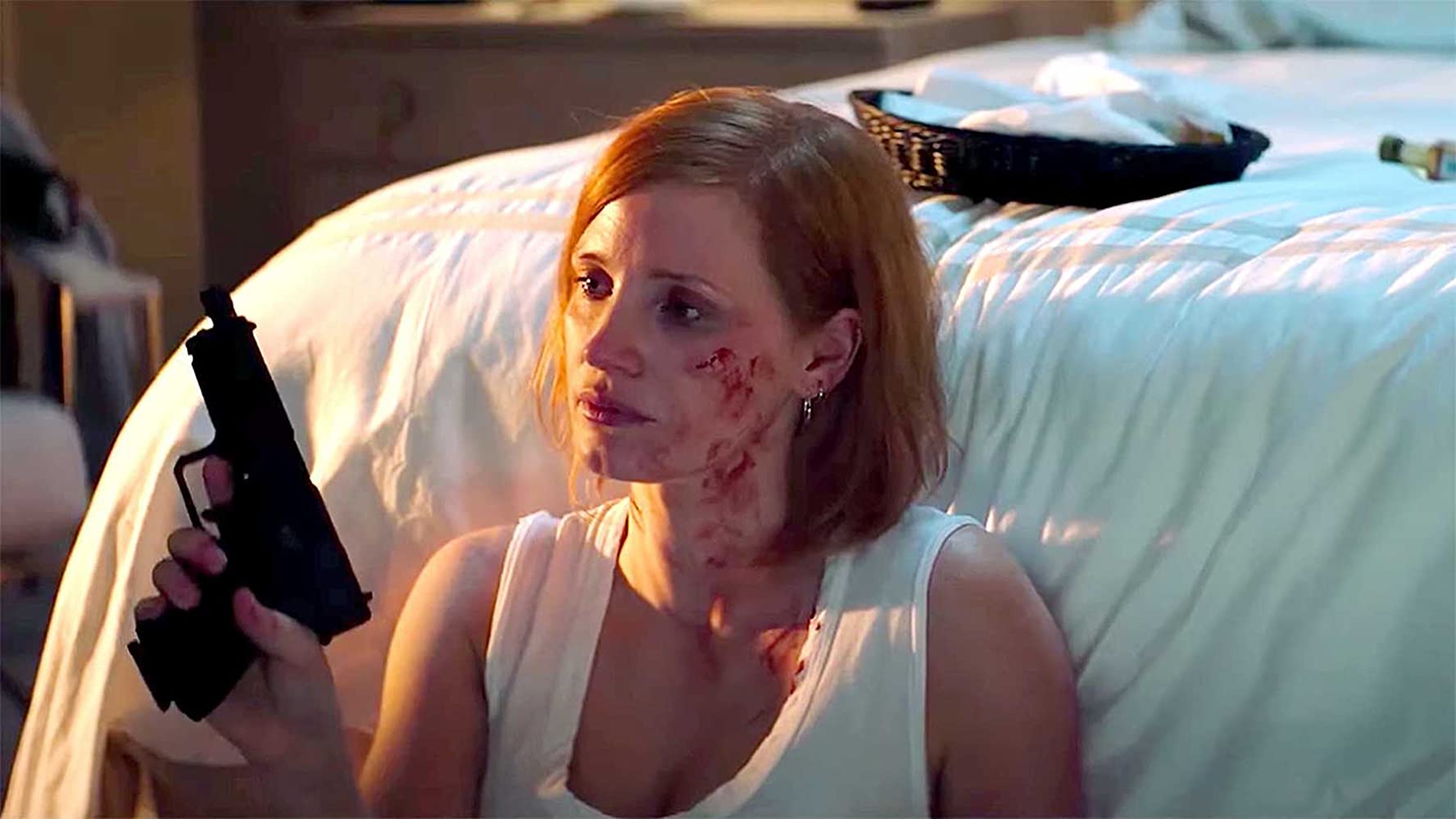Literary rating: ★★★
Kick-butt quotient: ☆☆☆☆
 I reviewed the first book in the series last year, and to be honest, found it a bit of a mixed bag. I was thus a bit surprised when the author contacted me and offered me a copy of volume two, in exchange for an unbiased review. Kinda brave. The good news is, this is a genuine improvement. Not perfect, certainly. But it has got one of the best ‘Final Bosses’ I’ve ever seen in a book.
I reviewed the first book in the series last year, and to be honest, found it a bit of a mixed bag. I was thus a bit surprised when the author contacted me and offered me a copy of volume two, in exchange for an unbiased review. Kinda brave. The good news is, this is a genuine improvement. Not perfect, certainly. But it has got one of the best ‘Final Bosses’ I’ve ever seen in a book.
To rewind. Katelyn Wolfraum is a German expat who has switched sides, and is now operating in North Africa as an agent of MI-6. This one starts off with her in and around Morocco, preparing for a looming Allied invasion. However, the water is thoroughly muddied by the presence of various, more or less unaligned groups, from Vichy soldiers to Jewish partisans, with whom Kat and her team of under-the-radar operatives have to interact. With the mission constantly evolving, she has to be quick in her ability to adapt, and fearless in her willingness to go up against enemies, the likes of which the world has never seen.
Which brings me to that Final Boss: an experimental German weapon known as the Landkreuzer P. 1000 Ratte. It’s a tank which weighs – and this is not a misprint – a thousand tons. For comparison, the heaviest tank currently in operational service, the M1A2 Abrams, weighs just 62 tons. This Landkreuzer is mounted with battleship guns, has impenetrable armor and its 16,000 horsepower engines mean literally nothing the Allies throw at it can stop the Landkreuzer. Oh, and Kat’s Nazi father is on board, for extra plot points.
The most startling thing might be, this monster wasn’t just some fever dream of Beals’s. It was actually proposed in 1942: Hitler loved the idea, but wiser heads prevailed. However, this book offers a glimpse at what this behemoth might have been like in action. And if you’re a fan of absolute mayhem, like I am, it’s glorious. There’s even an explanation offered for why this action was wiped from the historical record – basically, to make General Patton look good. He’s one of a number of genuine historical figures on both sides who are sprinkled in, adding a certain authenticity. Hence we get cameos by Audie Murphy and Claus von Stauffenberg, and the chunk in Morocco seems slightly influenced by a certain Humphrey Bogart film.
On the downside, the middle section, before the Landkreuzer shows up to provide focus, seems to consist of random action scenes bolted together, severely lacking in narrative flow. Then there’s things like the comparison of the machine to Godzilla: while perhaps not wrong, Godzilla didn’t appear until 1954. And Beals’s strength seems at the “big picture” level: there were times when I was less than clear about the details of who was doing what and to whom. But if you assume the answers to those questions are a) Kat, b) killing them and c) the enemy, you’ll probably not be too far off. Given my main complaint about book one was, “It needs considerably more Kat”: consider that addressed.
Author: Michael Beals
Publisher: Amazon Digital Services, available through Amazon, both as a paperback and an e-book
2 of 4 in the Adventures of Kat’s Commandos series.





 The IMDb omits the colon from the title, making rather less sense. Though it’s not inappropriate, because sense is likely not this film’s strongest suit. Indeed, I’d be hard-pushed to call it a “good” film. It is, however, consistently entertaining, and a fine piece of B-movie making. Ex-soldiers Caitlin (Phythian) and Brad (O’Hennessy) are bailiffs… Wait, is that a thing outside the UK? Just in case it’s not, let me quickly explain: they are not quite cops, but are still legal officials who can, for example, impose evictions or collect debts.
The IMDb omits the colon from the title, making rather less sense. Though it’s not inappropriate, because sense is likely not this film’s strongest suit. Indeed, I’d be hard-pushed to call it a “good” film. It is, however, consistently entertaining, and a fine piece of B-movie making. Ex-soldiers Caitlin (Phythian) and Brad (O’Hennessy) are bailiffs… Wait, is that a thing outside the UK? Just in case it’s not, let me quickly explain: they are not quite cops, but are still legal officials who can, for example, impose evictions or collect debts. A somewhat cheesy melodrama, this throws together elements from Western pot-boilers Double Jeopardy and If Tomorrow Comes, adds a handful of Bollywood spice, and to be honest, probably overcooks the whole thing a bit. The title translates as “There Was a Beautiful Woman”, presumably referring to the heroine of the piece, travel agent Sarika (Matondkar). Into her office one day comes hunky businessman Karan Singh Rathod (Khan), and after some reluctance, she begins a relationship with him. However, it turns out he is actually a mobster, and manipulates her into taking a fall rather than incriminating him, which nets Sarika a seven-year prison sentence. Escaping from jail, she vows to destroy her former lover, and in turn, works on framing Karan with his criminal pals, by making it look like he murdered a colleague and stole money.
A somewhat cheesy melodrama, this throws together elements from Western pot-boilers Double Jeopardy and If Tomorrow Comes, adds a handful of Bollywood spice, and to be honest, probably overcooks the whole thing a bit. The title translates as “There Was a Beautiful Woman”, presumably referring to the heroine of the piece, travel agent Sarika (Matondkar). Into her office one day comes hunky businessman Karan Singh Rathod (Khan), and after some reluctance, she begins a relationship with him. However, it turns out he is actually a mobster, and manipulates her into taking a fall rather than incriminating him, which nets Sarika a seven-year prison sentence. Escaping from jail, she vows to destroy her former lover, and in turn, works on framing Karan with his criminal pals, by making it look like he murdered a colleague and stole money. I can’t believe there have been seven X-Men movies now. I think the last I saw was the second, which came out in 2003. Since then, there seems to have been a lot of mutants under the bridge, so to speak – and, it appears, some jiggery-pokery with timelines. That’s the only way to explain the death early on in this origin story, of someone I’m
I can’t believe there have been seven X-Men movies now. I think the last I saw was the second, which came out in 2003. Since then, there seems to have been a lot of mutants under the bridge, so to speak – and, it appears, some jiggery-pokery with timelines. That’s the only way to explain the death early on in this origin story, of someone I’m  It has been a rough year for action heroines at the cinema. Actually, it has been a rough year for everyone everywhere, thanks to COVID-19. But for the purposes of this site, we have been sadly lacking the kind of tentpole releases which we usually write about over the summer. Wonder Woman 1984, for example, was to have come out in June. But with all venues bar the few remaining drive-ins closed, that was moved first to August, then October [and I don’t know about you, but I’m still not comfortable with the concept of cinema going]. Disney’s live-action version of Mulan opted to bypass theatres all together, and will instead be released on their streaming service.
It has been a rough year for action heroines at the cinema. Actually, it has been a rough year for everyone everywhere, thanks to COVID-19. But for the purposes of this site, we have been sadly lacking the kind of tentpole releases which we usually write about over the summer. Wonder Woman 1984, for example, was to have come out in June. But with all venues bar the few remaining drive-ins closed, that was moved first to August, then October [and I don’t know about you, but I’m still not comfortable with the concept of cinema going]. Disney’s live-action version of Mulan opted to bypass theatres all together, and will instead be released on their streaming service. The above paragraph is lean, mean and would have made for a perfectly decent movie. However, the script apparently decides it’s not enough – perhaps Chastain wanted something into which she could sink her dramatic teeth. For we get a whole slew of subplots and conflicts thrown on top. These include, but are not limited, to the following. Ava is a recovering alcoholic. Ava is estranged from her sister (Weixler). Ava had a previous relationship with her sister’s boyfriend, and there are still feelings there. He has a gambling problem. Ava caught her father having an affair, which led to her leaving home. It also caused Ava to break ties with her mother, played by Geena Davis.
The above paragraph is lean, mean and would have made for a perfectly decent movie. However, the script apparently decides it’s not enough – perhaps Chastain wanted something into which she could sink her dramatic teeth. For we get a whole slew of subplots and conflicts thrown on top. These include, but are not limited, to the following. Ava is a recovering alcoholic. Ava is estranged from her sister (Weixler). Ava had a previous relationship with her sister’s boyfriend, and there are still feelings there. He has a gambling problem. Ava caught her father having an affair, which led to her leaving home. It also caused Ava to break ties with her mother, played by Geena Davis. There’s probably a decent movie in here. An interesting premise, occupying the nexus where religion and science cross, and some very effective hand-to-hand action sequences, would potentially have made for a decent 90 minutes of fun. The problem is, this actually runs for 10 x forty-minute episodes, and the result is stuffed so full of padding, that it could be used as a sofa. The nuns of the title are members of the Order of the Cruciform Sword, a group which has been fighting demonic entities for centuries. Chief among them is the bearer of the Halo, a divine relic which bestows its owner with great powers, including rapid healing and the ability to phase through solid objects.
There’s probably a decent movie in here. An interesting premise, occupying the nexus where religion and science cross, and some very effective hand-to-hand action sequences, would potentially have made for a decent 90 minutes of fun. The problem is, this actually runs for 10 x forty-minute episodes, and the result is stuffed so full of padding, that it could be used as a sofa. The nuns of the title are members of the Order of the Cruciform Sword, a group which has been fighting demonic entities for centuries. Chief among them is the bearer of the Halo, a divine relic which bestows its owner with great powers, including rapid healing and the ability to phase through solid objects. Not sure I’ve ever read a book with three authors before, though Amazon omit Noe from the list given on Goodreads. This “novel by committee” might explain some of the problems with this, and its failure to mesh the two strands in any effective way. It’s a pity, as it starts off in entirely blistering fashion, with the arrival on Earth of the Syndicate, an extra-terrestrial invading army. We knew they were coming, so humanity’s forces take them on, in a massive and spectacular battle at their landing site in Mexico. It doesn’t go well for us, thanks to the attacker’s vastly superior technology. Survivors are few, but include Marines Quinn and Giovanni.
Not sure I’ve ever read a book with three authors before, though Amazon omit Noe from the list given on Goodreads. This “novel by committee” might explain some of the problems with this, and its failure to mesh the two strands in any effective way. It’s a pity, as it starts off in entirely blistering fashion, with the arrival on Earth of the Syndicate, an extra-terrestrial invading army. We knew they were coming, so humanity’s forces take them on, in a massive and spectacular battle at their landing site in Mexico. It doesn’t go well for us, thanks to the attacker’s vastly superior technology. Survivors are few, but include Marines Quinn and Giovanni. Or, perhaps: “What Blade Runner would have been like, if android Roy Batty was a good guy.” For this appears to be a mash-up of elements from that and Battle Angel Alita. While preceding the film version of the latter, it does seem to borrow elements of the manga, not least in its depiction of a future society where there is a strict, and basically vertical, division between the haves and the have-nots. After disease and pollution have pushed society to the brink, the rich and powerful live towards the top of a self-sufficient mega-city, under the control of ice queen Lady Jiru (Ishida) and her “Sodom” cyborg enforcers, leaving everyone else struggling for scraps down below. And leaving is a death sentence, due to the viruses infecting the outside world.
Or, perhaps: “What Blade Runner would have been like, if android Roy Batty was a good guy.” For this appears to be a mash-up of elements from that and Battle Angel Alita. While preceding the film version of the latter, it does seem to borrow elements of the manga, not least in its depiction of a future society where there is a strict, and basically vertical, division between the haves and the have-nots. After disease and pollution have pushed society to the brink, the rich and powerful live towards the top of a self-sufficient mega-city, under the control of ice queen Lady Jiru (Ishida) and her “Sodom” cyborg enforcers, leaving everyone else struggling for scraps down below. And leaving is a death sentence, due to the viruses infecting the outside world. I really must get round to reviewing Wentworth. The Australian women-in-prison drama certainly deserves coverage here, and has provided some of the best television we’ve enjoyed in the 2010’s. I keep intending to do so, but suspect that will now likely have to wait until after the show comes to a conclusion, following its ninth and final season in 2021. In the meantime, however, I do get to review the Turkish remake of the show. If you’ve seen Wentworth, this version is perhaps as unnecessary as any Hollywood remake of a familiar foreign film. Yet there are enough differences – both in story and culture – that I didn’t mind too much.
I really must get round to reviewing Wentworth. The Australian women-in-prison drama certainly deserves coverage here, and has provided some of the best television we’ve enjoyed in the 2010’s. I keep intending to do so, but suspect that will now likely have to wait until after the show comes to a conclusion, following its ninth and final season in 2021. In the meantime, however, I do get to review the Turkish remake of the show. If you’ve seen Wentworth, this version is perhaps as unnecessary as any Hollywood remake of a familiar foreign film. Yet there are enough differences – both in story and culture – that I didn’t mind too much. The life of Jill Conway (Seyfried) is slowly returning to somewhat normal, following her abduction by a serial killer in the Pacific Northwest. She was held in a forest pit, and barely managed to escape with her life. However, the lack of physical evidence and a history of mental health problems, helped cause the authorities not to believe her story. When Jill’s sister Molly vanishes, she’s certain the same killer is responsible, and when the police again fail to take her seriously, begins investigating herself. But when the cops find out this former mental patient is packing heat, Jill becomes a fugitive herself.
The life of Jill Conway (Seyfried) is slowly returning to somewhat normal, following her abduction by a serial killer in the Pacific Northwest. She was held in a forest pit, and barely managed to escape with her life. However, the lack of physical evidence and a history of mental health problems, helped cause the authorities not to believe her story. When Jill’s sister Molly vanishes, she’s certain the same killer is responsible, and when the police again fail to take her seriously, begins investigating herself. But when the cops find out this former mental patient is packing heat, Jill becomes a fugitive herself.